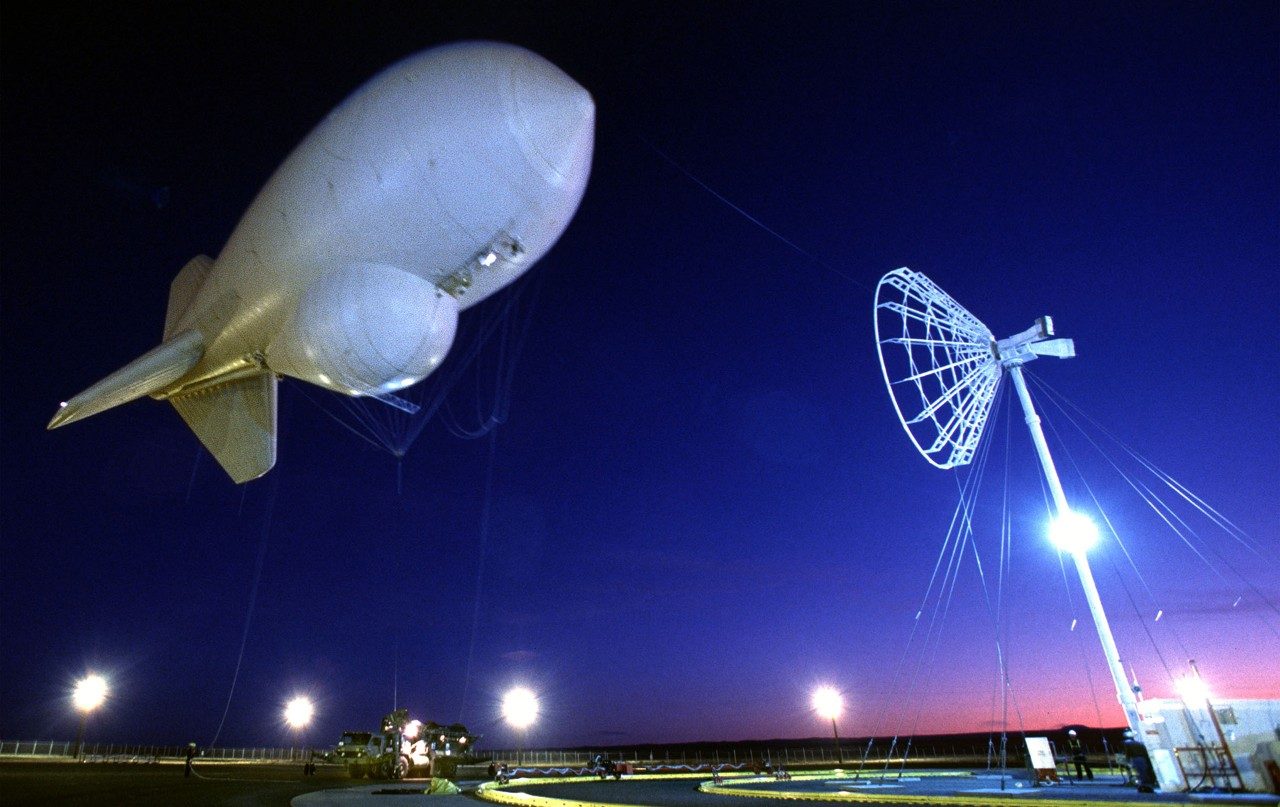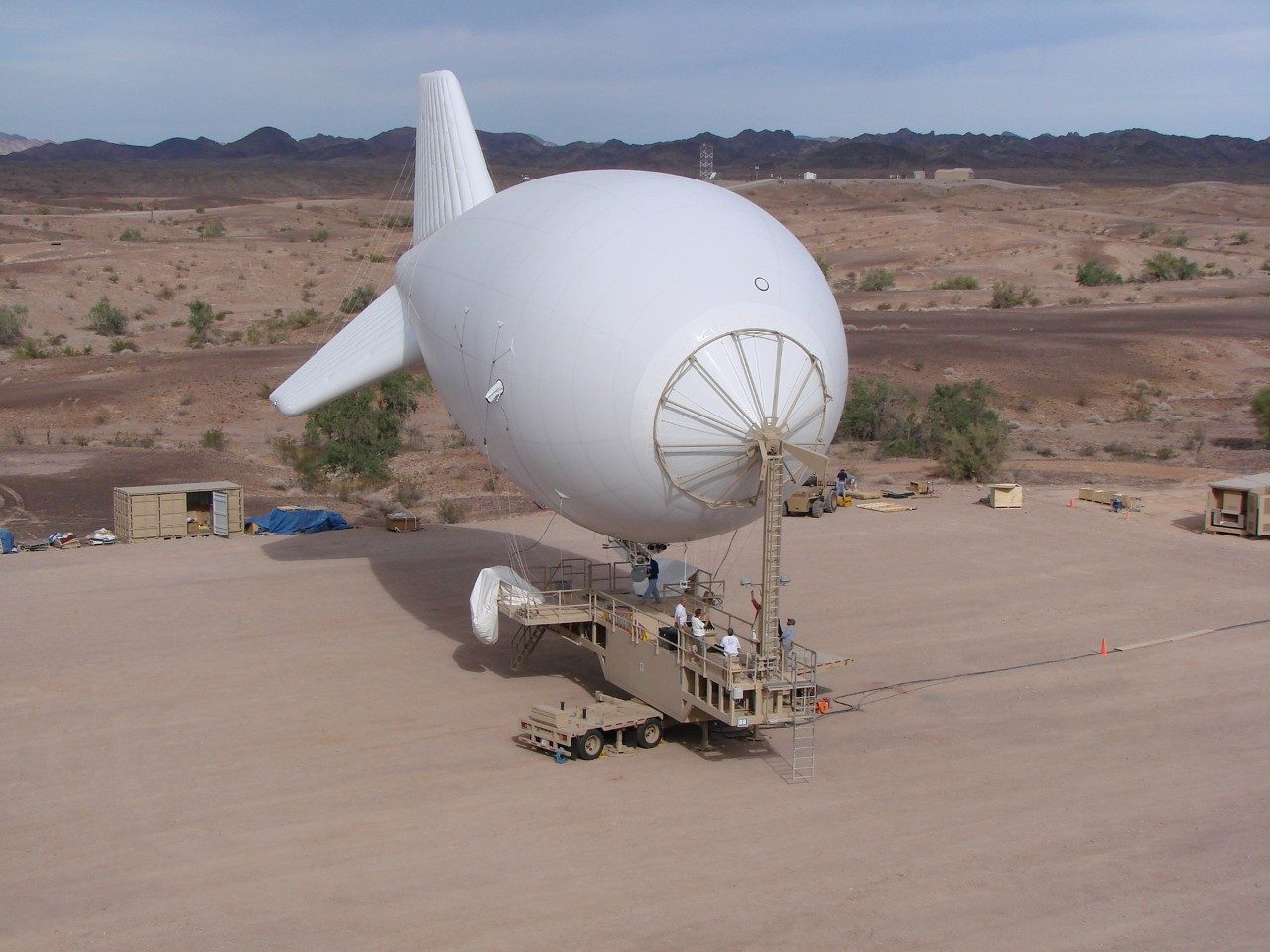From afar, it looked like a scene straight out of an H. G. Wells novel. In 2003, a series of blimp-shaped air vehicles began rising, one after another, over the arid terrain of Afghanistan.
The unusual-looking ships—helium-filled aircraft called aerostats—rose to an altitude of 15,000 feet and floated quietly in the sky, each secured to a ground-based mooring system by long tethers.
Insurgents on the ground were perplexed by what they saw. The airships didn’t seem to move, nor did they fire missiles or release bombs.
It was only when insurgents began to notice coalition forces anticipating some of their covert operations that they realized those alien-looking airships had been watching—and recording—their every movement via a new surveillance program called the Persistent Threat Detection System (PTDS).

The Power of Persistence
Using aerostats for surveillance purposes has a long history, from the use of hot-air balloons during the Civil War to the recent deployment of tethered air vehicles to monitor drug-running activity in the Caribbean.
But in 2003, Lockheed Martin engineers began updating the envelopes of existing naval aerostats with new durable materials capable of achieving lift while carrying larger payloads of sensors, cameras and audio equipment. New tethers—lined with a mix of copper wires and fiber-optic cables—transmitted data to a Ground Control Station, which then disseminated near real-time information of hostile activity to operational forces.
The aerostats have proven to be an invaluable reconnaissance tool, gathering intelligence from 100 miles in every direction, 24 hours a day, for weeks on end, thwarting everything from the planting of IEDs in remote locations to rogue Afghan police officers extorting money from civilians at illegal checkpoints.

Many Eyes in the Sky
In all, some 66 PTDS aerostats have been put into action in Iraq and Afghanistan since 2003, as the program has evolved into a multi-mission surveillance platform equally adept at protecting convoys in transit as providing intelligence on enemy troop movements.
Due to the success of the PTDS aerostats, Lockheed-Martin is developing a High Altitude Long Endurance Demonstrator (HALE-D), which seeks to hover, completely untethered, at 60,000 to 70,000 feet. Used in conjunction with satellites and low-flying surveillance aircraft, these aerostats will offer multilayered surveillance capabilities, enhancing situational awareness in theaters of war while guarding U.S. and allied forces across the globe.
Sources and Further Reading
- Browning, Ron. Interview with the History Factory. Dec. 5, 2012.
- Pollacheck, Brandon. “Army Accepts Last Persistent Threat Detection System.” www.army.mil. July 2, 2012. Last viewed: Dec. 6, 2012.http://www.army.mil/article/82551/Army_accepts_last_Persistent_Threat_Detection_System_aerostat/




